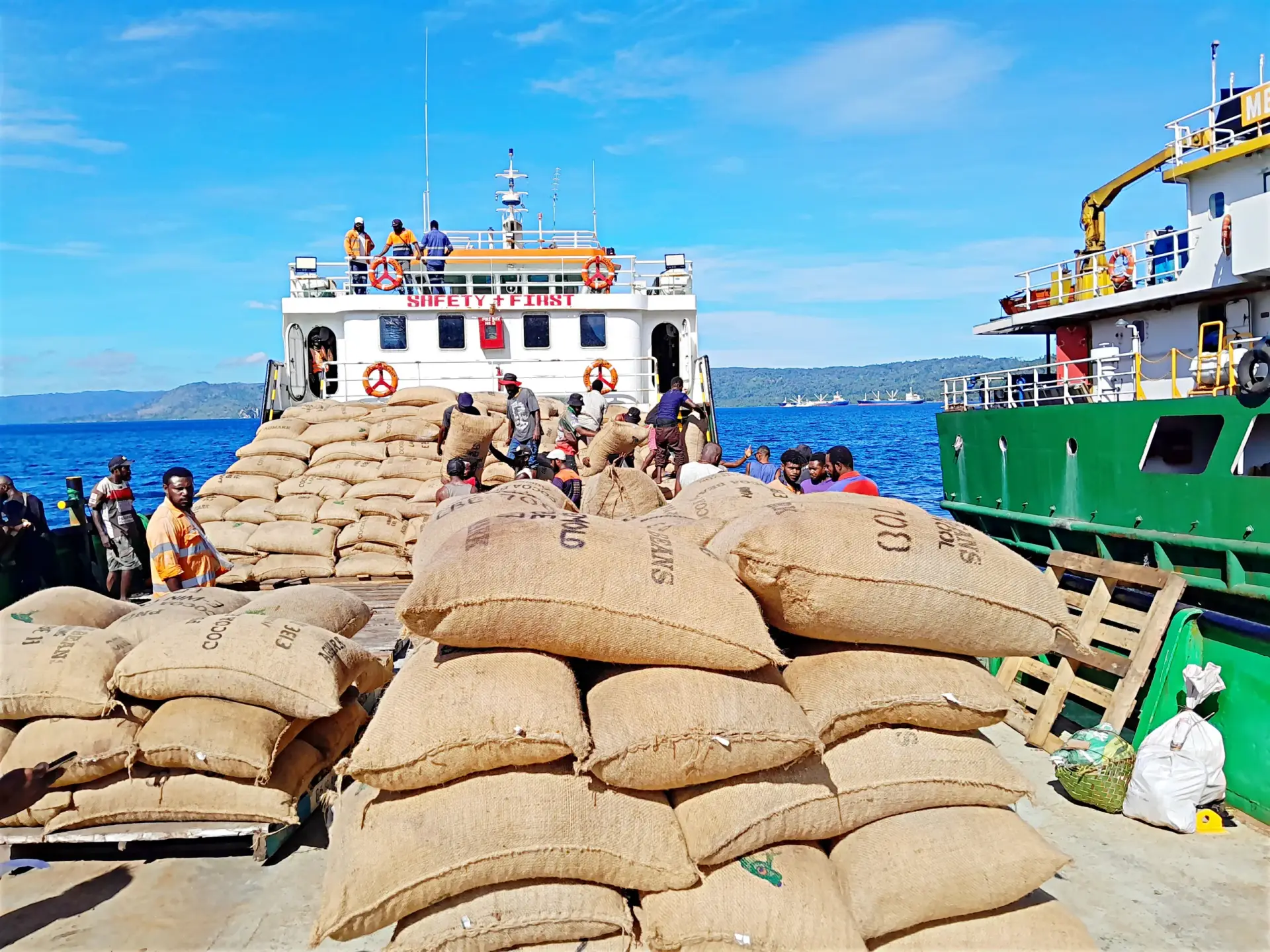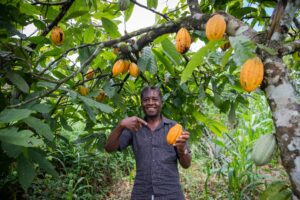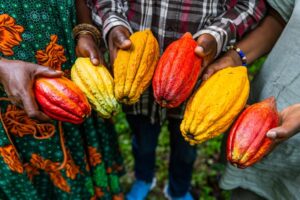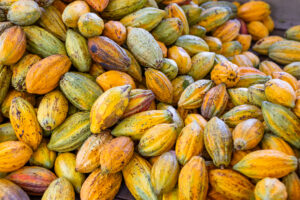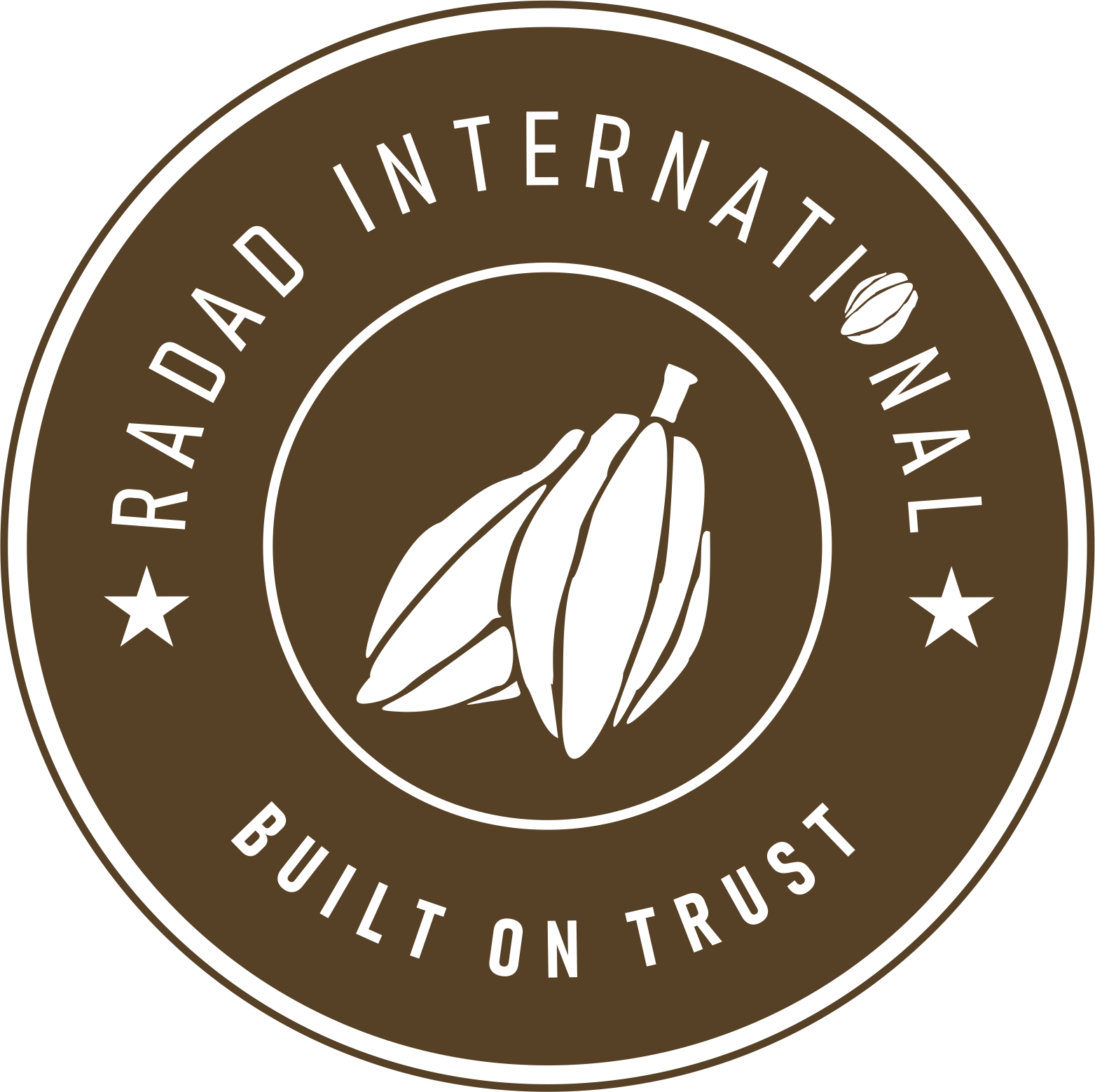How to Source Bulk Cocoa Beans From Africa Without Compromising on Quality
Sourcing cocoa in bulk can feel like a balancing act. On one hand, you need competitive pricing and reliable volumes; on the other, you can’t sacrifice the rich flavor, aroma, and consistency that define great chocolate. You need enough beans to keep production lines moving, but if you cut corners, you end up with inconsistent flavor, off‑notes, or worse—batch recalls.
Whether you run a small artisanal workshop or manage industrial chocolate manufacturing, these cocoa sourcing tips will help you build a robust cocoa supply chain, partner with a trusted cocoa exporter, and secure bulk cocoa beans that meet your standards.
-
Understand the Cocoa Value Chain
Before you buy a single bag, map out where your cocoa comes from and all the steps it travels through:
-
Farm Level
-
Smallholder farmers or estates grow trees, harvest pods, ferment beans in wooden boxes, and sun‑dry them on mats.
-
Variables: fermentation length (3–7 days), sun exposure, humidity—each alters bean flavor.
-
-
Local Collection & Primary Processing
-
Beans move to cooperatives or processing centers. Here they may be re‑dried, sorted, and bagged.
-
Quality control at this stage weeds out moldy or damaged beans.
-
-
Export Packaging & Shipping
-
Proper jute or grain‑pro bags with liner films protect beans from moisture and pests.
-
Beans ship in containers—sometimes refrigerated—for 20–40 days to your port.
-
-
Import Inspection & Storage
-
On arrival, conduct cocoa quality assurance tests (moisture, mold, fat content).
-
Store at 16–20 °C and controlled humidity (60–65%) to preserve freshness.
-
-
Factory Processing
-
Beans roast, winnow, and grind into cocoa mass or powder.
-
Any problems from earlier stages show up here as inconsistent flavor or texture.
-
By visualizing each link, you know where risks lie and can build in checks.
-
Define Your Quality Standards
Have clear specs before you approach any wholesale cocoa products vendor. Common parameters:
| Parameter | Ideal Range | Why It Matters |
| Moisture Content | 6–8% | Too high: mold risk; too low: brittle nibs |
| Fat Content (Cocoa Butter) | 50–55% | Impacts mouthfeel and consistency |
| Bean Size & Color | Uniform, unbroken beans | Affects roasting consistency |
| Acidity (pH) | 5.0–5.5 (after roasting) | Indicates proper fermentation |
| Mycotoxin Levels | < 2 ppm (Aflatoxin) | Food safety compliance |
Put these in writing—a cocoa export guide or specification sheet—to share with potential suppliers.
-
Identify Potential Bulk Cocoa Suppliers
Use multiple channels to build a shortlist of vendors:
-
Trade Shows & Conferences – Events like the International Cocoa Conference or Salon du Chocolat bring farmers, cooperatives, and exporters together.
-
Industry Associations – The Cocoa Merchants Association or local cocoa boards often keep directories of African cocoa suppliers.
-
Online Marketplaces – Verified B2B platforms let you filter by region, certifications, and volume capacity.
-
Referrals – Ask peers which trusted cocoa exporter they work with. A personal introduction can speed up negotiations.
For each supplier, note:
-
Annual export capacity (tonnes per year)
-
Origin countries (e.g., Ivory Coast, Ghana, Nigeria, Cameroon)
-
Certifications (Fairtrade, Organic, Rainforest Alliance)
-
Sample policies (do they provide small test lots?)
-
Vet Suppliers Thoroughly
Once you have a shortlist, dig into each candidate:
A. Ask Key Questions
-
What’s your source farm or cooperative?
-
Knowing the actual origin (down to the village) signals transparency.
-
-
Can you show recent lab reports?
-
Look for moisture, fat, microbial counts, and mycotoxin screenings.
-
-
How do you handle sorting and drying?
-
Automated vs. manual processes can affect quality consistency.
-
-
Do you offer bulk cocoa beans in full container loads?
-
Verify minimum order quantities (MOQs) and packing details.
-
-
What are your payment terms and Incoterms?
-
Aim for net‑30 or net‑60 with FOB or CIF as appropriate.
-
B. Visit the Origin (If Possible)
-
Inspect fermentation boxes, drying platforms, and storage facilities.
-
Talk to cooperative leaders to understand farmer practices.
-
A short trip goes a long way in building trust and avoiding surprises.
C. Check References
-
Speak with at least two other customers about on‑time delivery, quality, and responsiveness.
-
Cross‑check any claims of sustainability or social programs.
-
Negotiate Contracts Like a Pro
A solid contract protects both you and your supplier. Include:
-
Product Specifications
-
Embed your quality standards table directly into the contract.
-
-
Volume & Price
-
Agree on fixed or adjustable pricing (e.g., linked to the ICE cocoa benchmark).
-
-
Delivery Schedule
-
Stagger shipments to match production needs; avoid warehouse overflow.
-
-
Payment Terms
-
Combine a small deposit (10–20%) with balance upon delivery and quality check.
-
-
Quality Escrow Clause
-
Hold back 5–10% payment until all specs are confirmed on arrival.
-
-
Force Majeure & Dispute Resolution
-
Define events that release obligations and outline mediation or arbitration steps.
-
A well‑drafted agreement gives you leverage if beans arrive with high moisture or fail safety tests.
-
Master Cocoa Logistics
Logistics can make or break bean quality. Here’s how to keep your cocoa shipping process smooth:
A. Packing & Container Prep
-
Bags: Use double‑lined jute or grain‑pro bags with moisture barrier liners.
-
Container Type: Standard vs. reefer (choose reefer for humid routes).
-
Loading: Block and brace bags to prevent movement and bag damage.
B. Transport Route
-
Sea Freight: Cost‑effective but slower. Track vessel schedules and weather.
-
Air Freight: Fast but expensive—ideal for time‑sensitive, small batches.
-
Multi‑Modal: Combine truck, rail, and ship for remote origins.
C. Customs & Duties
-
Prepare a cocoa documentation packet: commercial invoice, packing list, bill of lading, certificate of origin, and any phytosanitary certificates.
-
Work with a customs broker experienced in agricultural imports.
D. Port Handling
-
Inspect containers on arrival before signing the delivery receipt.
-
Transfer beans promptly to your warehouse to avoid demurrage fees.
-
Implement Cocoa Quality Assurance (QA) Programs
Quality checks should happen at every stage:
-
Pre‑shipment Inspection
-
Engage a third‑party QA firm at the origin port to sample moisture, look for foreign matter, and verify bag counts.
-
-
On‑arrival Testing
-
In your lab, retest for moisture, fat, acidity, and mycotoxins.
-
Compare results with the supplier’s lab report; any deviation triggers the escrow clause.
-
-
Roast Profile Trials
-
Maintain a controlled roast protocol for each new lot.
-
Conduct sensory evaluations—tasting for bitterness, acidity, and off‑notes.
-
-
Continuous Monitoring
-
Log data in a digital quality management system.
-
Track lot performance over time—identify trends or drifting quality.
-
Good QA not only ensures consistent chocolate but also reduces waste and customer complaints.
-
Balance Price, Quality, and Sustainability
In today’s market, you can’t ignore ethical sourcing. Use these strategies:
-
Pay a Stable Price to farmers to prevent them from abandoning cocoa for other crops.
-
Support Agroforestry programs that plant shade trees, improving biodiversity and bean flavor.
-
Choose Certified Lots (Fairtrade, Organic) if your brand needs a sustainability story.
-
Share the Story on your packaging or website—customers love hearing where their chocolate originates.
By factoring in social and environmental costs, you help build a cocoa supply chain that lasts.
-
Plan for Seasonal and Market Fluctuations
Cocoa prices and harvest cycles are cyclical:
-
Main Crop Season: Varies by country—plan to secure at least 60% of annual needs during peak harvest when prices are lower.
-
Mid Crop and Light Crop: Smaller volumes, often at higher prices—use for topping up or blending.
-
Price Hedging: Forward contracts or options can lock in costs when markets spike.
By aligning purchases with crop calendars and market insights, you avoid last‑minute scrambles—and inflated prices.
FAQs
Q1: What minimum order size should I expect for bulk cocoa beans?
Most bulk cocoa suppliers require at least 20 tonnes (one 20‑ft container). Some artisanal or specialty exporters may offer smaller MOQs but at higher prices.
Q2: How long does it take to ship cocoa by sea?
From West Africa to Europe: 20–30 days. To North America: 25–35 days. Air freight cuts that to 1–2 days but costs 4–6 times more.
Q3: What happens if my shipment fails quality tests?
Invoke the quality escrow clause. The supplier must replace the batch, issue a credit note, or renegotiate. Never accept substandard beans into production.
Q4: Are digital traceability systems worth the investment? Absolutely—especially for high‑end or certified products. They reduce the risk of fraud, build consumer trust, and often justify premium pricing.
Q5: How can small producers compete in bulk sourcing? Form cooperatives or join pool buying groups. Together, you meet MOQs, share costs, and negotiate better terms with trusted cocoa exporters.
Q6: How can I verify a supplier is truly a trusted cocoa exporter? Look for verifiable certifications (Fairtrade, Rainforest Alliance), request audit reports, and ask for references from other manufacturers.
Q7: What should I do if a shipment fails quality checks? Invoke your quality escrow clause. Reject the batch, negotiate a replacement or discount, and work with the supplier to diagnose the root cause.
Q8: How long can bulk cocoa beans be stored safely? Stored correctly (16–20 °C, low humidity), beans can last 12–18 months without significant flavor loss. Rotate stock using FIFO to maintain freshness.
Q9: Are there special documentation requirements for cocoa imports? Yes—key docs include a commercial invoice, packing list, bill of lading, certificate of origin, and any phytosanitary certificates required by your country.
Q10: Can small chocolate makers buy direct from farmers? Yes, through cooperatives or partnerships—but be prepared for smaller volumes, variable quality, and more hands‑on logistics.
Q9: How do I blend origins for a consistent flavor profile? Work with your supplier to create a custom blend—e.g., 60% West African beans for body + 40% Latin American beans for fruitiness—and adjust based on sensory feedback.
Ready to find your perfect bulk cocoa beans partner? Start by drafting your quality specs today, and reach out to at least three trusted cocoa exporters like Radad International for samples. Your next batch of chocolate could be the best one yet!

